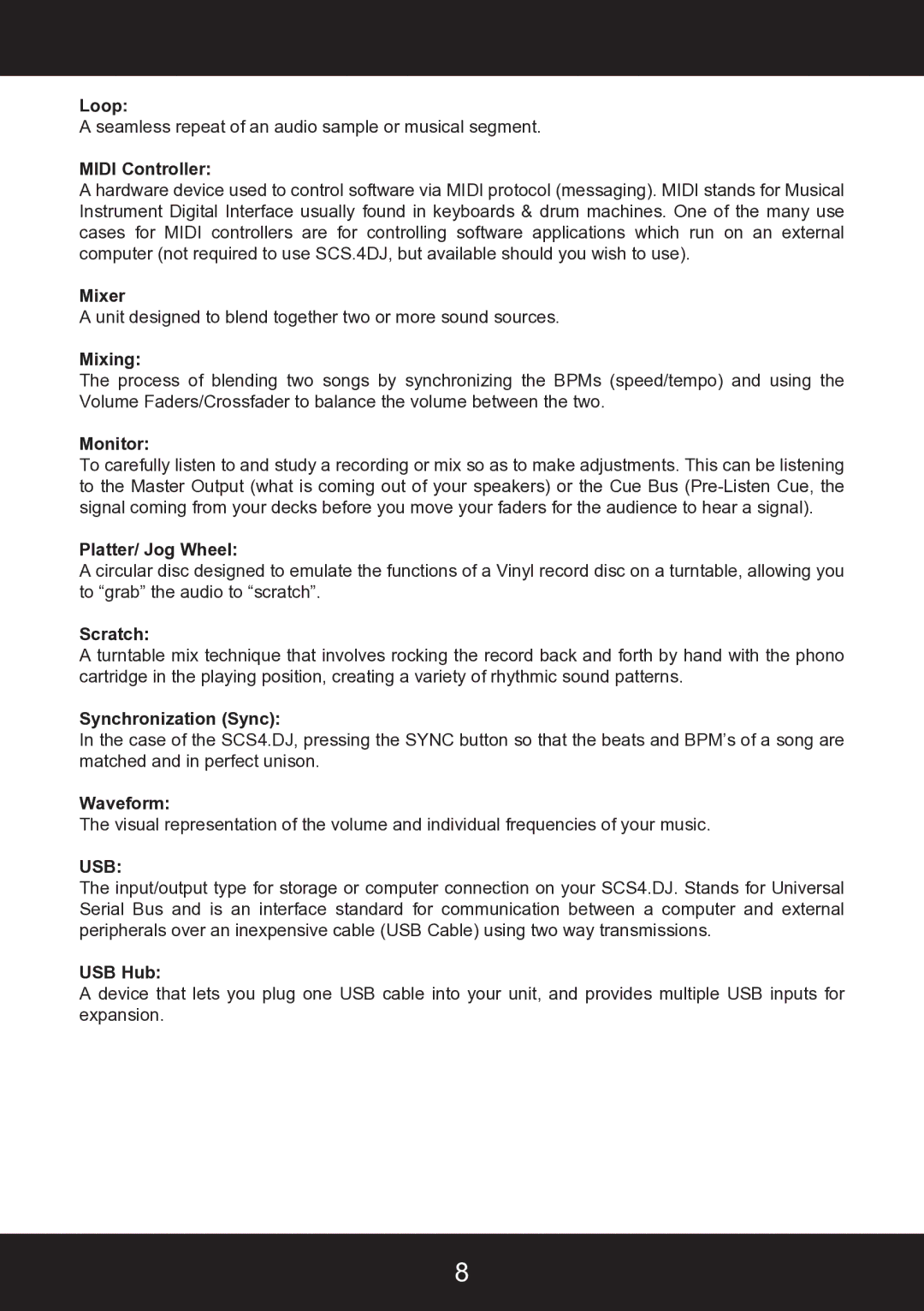
Loop:
A seamless repeat of an audio sample or musical segment.
MIDI Controller:
A hardware device used to control software via MIDI protocol (messaging). MIDI stands for Musical Instrument Digital Interface usually found in keyboards & drum machines. One of the many use cases for MIDI controllers are for controlling software applications which run on an external computer (not required to use SCS.4DJ, but available should you wish to use).
Mixer
A unit designed to blend together two or more sound sources.
Mixing:
The process of blending two songs by synchronizing the BPMs (speed/tempo) and using the Volume Faders/Crossfader to balance the volume between the two.
Monitor:
To carefully listen to and study a recording or mix so as to make adjustments. This can be listening to the Master Output (what is coming out of your speakers) or the Cue Bus
Platter/ Jog Wheel:
A circular disc designed to emulate the functions of a Vinyl record disc on a turntable, allowing you to “grab” the audio to “scratch”.
Scratch:
A turntable mix technique that involves rocking the record back and forth by hand with the phono cartridge in the playing position, creating a variety of rhythmic sound patterns.
Synchronization (Sync):
In the case of the SCS4.DJ, pressing the SYNC button so that the beats and BPM’s of a song are matched and in perfect unison.
Waveform:
The visual representation of the volume and individual frequencies of your music.
USB:
The input/output type for storage or computer connection on your SCS4.DJ. Stands for Universal Serial Bus and is an interface standard for communication between a computer and external peripherals over an inexpensive cable (USB Cable) using two way transmissions.
USB Hub:
A device that lets you plug one USB cable into your unit, and provides multiple USB inputs for expansion.
8
